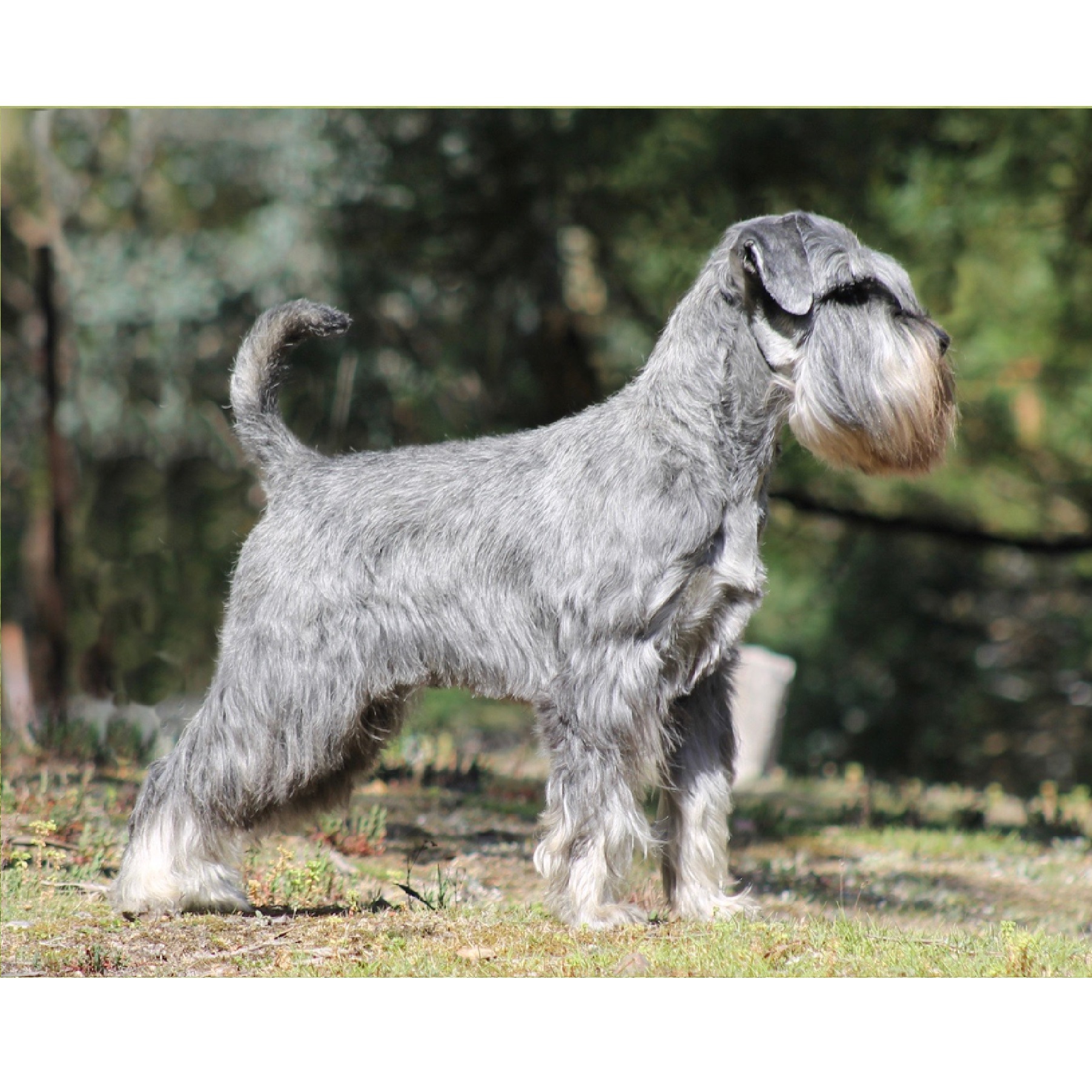Breeds
Schnauzer

GROUP 6 - UTILITY
Brief History
The Schnauzer is the oldest of the three Schnauzer sizes and takes his name from the first dog of its kind to win at the international show in Hanover in 1897. For the previous couple of centuries, the breed had been known as the Wire-Haired Pinscher and was the result of crossing the grey Wolf Spitz with the Affenpinscher and the Black German Poodle.
Average Life Span
When considering a dog, please realise that you are taking it on for its lifetime.
The average life span is 12 to 15 years.
Temperament
Schnauzers are reliable and trainable, able to work independently. They are excellent, instinctive watchdogs who will defend their family. Naturally aloof, but with proper socialising they are sensible.
General Breed Description
They are a medium size dog with bushy beard and eyebrows. Very energetic dog who wants to be part of all your family activities. Needs regular exercise and a firm owner. The colours are pepper and salt, and pure black.
Coat and Care Requirements
The Schnauzer has a double coat which is harsh and wiry. The leg hair, beard and eyebrows are scissored, and rest of the dog is stripped but most pet people get their dogs professionally groomed and are clipped. A regular brush and occasional bath will keep him looking good between full grooming sessions.
Size
Height: Males 45.5 to 50.5cms (20ins), Females 43.5 to 48.5cms (18ins)
Health
All breeds have individual health issues. When speaking to breeders it is recommended you enquire about breed’s health and what health testing the breeder does. The Schnauzer is generally a healthy breed, however health conditions do occur occasionally. These may include Hip Dysplasia (HD), Elbow Dysplasia (ED) and Dilated Cardiomyopathy (DCM) the latter requires a clear DNA test.
Suitability
They are often too spirited and dominant for all members of your family especially the young and elderly. They are not recommended as a first breed but do well with owners who know how to take the lead and be a firm, authority figure. They are easy to train, but they do get bored with repetition training. Recommended for agility, tracking and herding.
In Conclusion
Now you know a little more about this breed. If you have decided this is the dog for you and wish to investigate further, please contact the Breed Club or Dogs Victoria. They will be able to give you information about available puppies and also suggest dog events where you can see the breed and speak to breeders. In this way you will gain a better perspective of the breed and its needs. With any breed of dog, it is important to research and determine suitability for your lifestyle before committing to a puppy which will be a part of your family for many years to come.
Whilst many breeds are recommended for families, it is imperative that when children are with dogs they are supervised at all times. Basic obedience training is a vital part of dog ownership.
Dogs Victoria is about the responsible ownership of all dogs and in particular the preservation of pure breeds.
Link to Dogs Australia Breed Standard: https://dogsaustralia.org.au/breed/detail/187
Breeders
Sorry, there are currently no breeders advertising for this breed. If you are a registered Dogs Victoria breeder and wish to advertise here please create an advertisement here.


